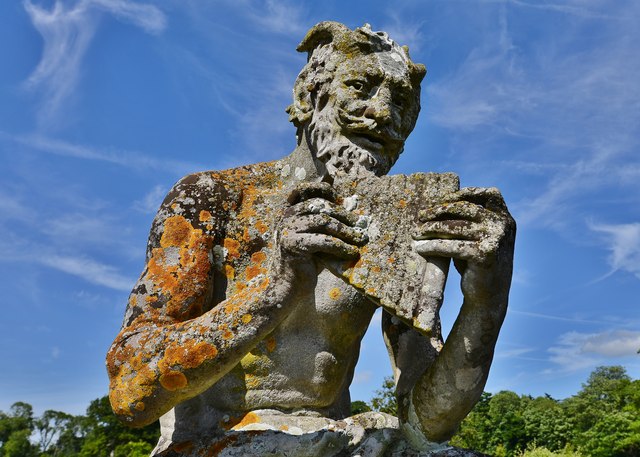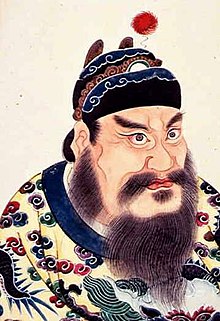To begin with, the International Academies of Emergency Dispatch explains that modern fire fighting did not start until 1830 in Edinburgh< Scotland. Before that time, there were limited fire regulations and “fire wardens” who would police the town and inspect chimneys and such, fining people if they were negligent. At this point in history, fire departments were basically a shed full of buckets that volunteers would try to bucket-brigade a fire out with elbow grease and community spirit.

Before the London fire department, cities would have watchmen who would sound a city alarm when fire would break loose, essentially rousing the volunteers and citizenry to face the nascent threat. The first real, federal fire-fighting force were the Vigiles of Rome, formed by Agustus in 21 BCE. It was originally a slave army had previously been used by Egnatius Rufus to privately fight fires. Augustus inherited Rufus’ slave army and mixed in freedmen to create a squadron of cohorts with their own camp in each city where firefighting equipment was stored. The vigiles would patrol the city, arresting arsonists and sounding the bells if they saw a conflagration. Their methods were crude though, and oftentimes demolishing the building or its neighbors was their only means of dealing with the fire.
 “So Tiberius, I have good news and bad news. The good news is we stopped the fire. The bad news is we destroyed your house to do so…”
“So Tiberius, I have good news and bad news. The good news is we stopped the fire. The bad news is we destroyed your house to do so…”
Augustus’s fire brigade may have in part been a response to the private fire brigade of Marcus Licinius Crassus, the wealthiest man in Ancient Rome. Crassus had a talent for making money, in some cases in unscrupulous ways. According to Plutarch, Crassus would go to places where houses were on fire and convince owners of neighboring properties to sell their homes to him before the fires landed. After purchasing a huge number of those homes for a trifling cost, he would purchased slaves who were architects and builders and rebuilt the homes to flip for a profit. (Plut. Crassus, 2:1, p. 317-18). Here the story gets a little hard to trace, but somehow encyclopedias and scholars have glommed onto the idea that Crassus organized a private fire brigade of slaves and would go about Rome to assorted fires (there were a lot, cooking was all on a fire and the buildings were VERY flamable), and haggle with the homeowners over a price to put the fire out. If the homeowner refused, Crassus would let the home go up in flames and purchase the charred rubble for cheap, sending his worker ants to rebuild it for him. Essentially, Crassus was making money hand-over-fist by selling fire services at a premium, and if the homeowner refused to pay for his services, he would simply purchase the burned out hull for pennies on the dollar (or.. pieces of sestertii on the sestertius) and make a profit on the land in a different way. Unethical, yes; clever, also yes; did he ever send a slave to go ignite a fire purely to force a profit out of it, there is no evidence of that happening but it certainly feels like something he would do…
While it is difficult find the origin point of the Crassus fire-extortion story, (i.e. I can’t find it) it seems to be ubiquitous in many tellings of Crassus’ rise to fabulous wealth from simple, regular wealth. In particular, the idea that city-run fire departments were a response to extortion by flame seems to find purchase in Crassus’ tale.
 He even looks like a Crassus..
He even looks like a Crassus..
Citations (loosely tossing that term around now):
https://www.emergencydispatch.org/articles/historyoffirefighting.html
https://www.ancient.eu/Vigiles/
https://youtu.be/_Oscq4MfyEc (a solid video on Crassus’ rise to power)
https://www.encyclopedia.com/people/history/ancient-history-rome-biographies/crassus
 “Let me sing you the song of my people…”
“Let me sing you the song of my people…” No joke, you look up “Pan Goat” and you get images of some very odd statues..
No joke, you look up “Pan Goat” and you get images of some very odd statues.. In Greece, this was basically the ONLY way to end a boxing match.
In Greece, this was basically the ONLY way to end a boxing match. The Boxer of Quirinal statue has an excellent depiction of the boxing wraps
The Boxer of Quirinal statue has an excellent depiction of the boxing wraps History is a broad, broad field that covers the entire human experience (depending on who you ask) from the origins of the species, the origin of the planet, or everything post-writing. When queried about it, most history teachers answer in one of three veins:
History is a broad, broad field that covers the entire human experience (depending on who you ask) from the origins of the species, the origin of the planet, or everything post-writing. When queried about it, most history teachers answer in one of three veins:

 Gold star for whoever can answer who this chap is and what he is doing to that rope.
Gold star for whoever can answer who this chap is and what he is doing to that rope. Mankind’s resilience is our strength, our history is a testament to it.
Mankind’s resilience is our strength, our history is a testament to it.

 The strength of the story of history is that we know that we shall overcome. We are hard pressed to find examples of wrongs that are eternally set in stone and wrongdoers who escape the overwhelming weight of time. Remember, justice may not be swift or loud, but it is inevitable
The strength of the story of history is that we know that we shall overcome. We are hard pressed to find examples of wrongs that are eternally set in stone and wrongdoers who escape the overwhelming weight of time. Remember, justice may not be swift or loud, but it is inevitable Lookit that guy, he’s so cute when he’s excited to figure out that mass displaces water.
Lookit that guy, he’s so cute when he’s excited to figure out that mass displaces water. This is Pierre de Fermat, and he trolled the Math world from the grave.
This is Pierre de Fermat, and he trolled the Math world from the grave. Coming soon to a theater near you: A gritty crime thriller about the dark, pulsing underworld of Milan’s bean counters
Coming soon to a theater near you: A gritty crime thriller about the dark, pulsing underworld of Milan’s bean counters He’s not wrong…
He’s not wrong… “Sorry Camaxtli, this is what you get for wearing cotton after Labor day”
“Sorry Camaxtli, this is what you get for wearing cotton after Labor day” A couple theories exist that the crown is only a symbol of power for most of history when it is plopped on the king’s head by a pope. For that reason, most new kings would first ensure that there was a public coronation by the divine representative to legitimize his power.
A couple theories exist that the crown is only a symbol of power for most of history when it is plopped on the king’s head by a pope. For that reason, most new kings would first ensure that there was a public coronation by the divine representative to legitimize his power. Since a picture of Nicolo Pisani does not seem to exist on the internet, pretend this image of two random stereotypical Venetian masqueraders is actually an image of Pisani lifting the boats from the sea with his bare hands.
Since a picture of Nicolo Pisani does not seem to exist on the internet, pretend this image of two random stereotypical Venetian masqueraders is actually an image of Pisani lifting the boats from the sea with his bare hands. This is a picture of Negropone’s harbor, just to give some context. Venice straight up Lazarus’d galleys and went on their merry way without even a footnote in history.
This is a picture of Negropone’s harbor, just to give some context. Venice straight up Lazarus’d galleys and went on their merry way without even a footnote in history. For reference, this is what a scuttled ship looks like; somewhat like a sad fish bowl decoration.
For reference, this is what a scuttled ship looks like; somewhat like a sad fish bowl decoration.

 The city of Marathon on a map, it’s oddly enough about 26.2 miles away from Athens
The city of Marathon on a map, it’s oddly enough about 26.2 miles away from Athens The Battle of Marathon battle map looks like the Battle of Cannae, but flipped around. Flanking and baiting have been the most effective tactics for most of history.
The Battle of Marathon battle map looks like the Battle of Cannae, but flipped around. Flanking and baiting have been the most effective tactics for most of history. Just so people are clear, it wasn’t a nice flat run either. Greece has some gnarly hills that Pheidippides had to gasp and gurgle his way up on his way back to the Assembly.
Just so people are clear, it wasn’t a nice flat run either. Greece has some gnarly hills that Pheidippides had to gasp and gurgle his way up on his way back to the Assembly.







